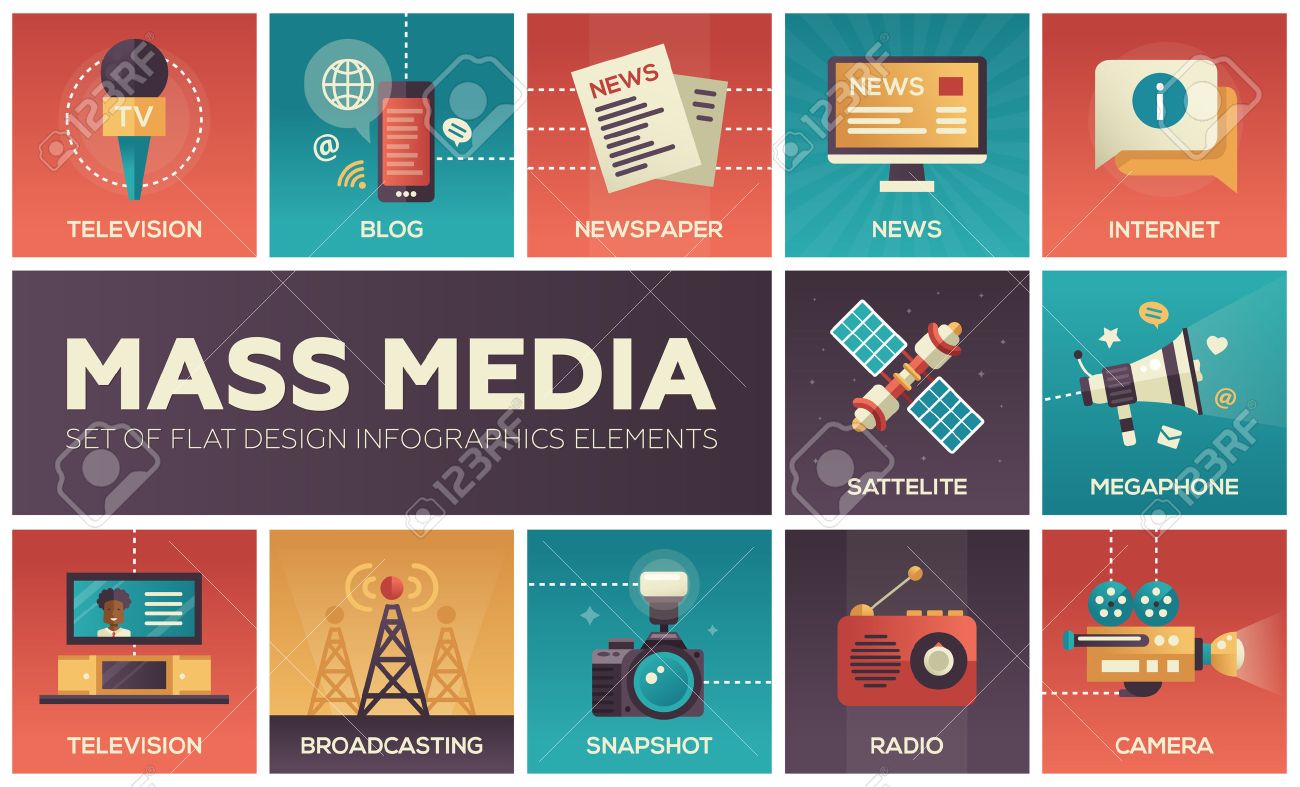
Proceeding with the types of mass media that was elaborately discussed…
Traditional Media which has three divisions namely:
- Print Media which is published on a paper as its medium. This is considered the one of the oldest form of communication during the Spanish period. Examples are newspapers, magazines, journals, and pamphlets. The main advantage of print media is that it is comprehensive and easy to read like when you’re reviewing for your exams, print media is widely used by students because it doesn’t make our eyes feel uncomfortable unlike the use of power points. But the disadvantage is that it is quick to become outdated.
- Broadcast Media uses radio waves and signals to communicate over wide distance. The two known mediums of broadcast media are the television and radio. This is a convenient type of mass media for it provides both the audio and the video. This can also gives information to its audience while entertaining. This is widely used in our time today in the Philippines most especially during the evening where families are gathered to watch their favorite primetime show. But the disadvantage of broadcast media is that we have to rely on electricity which costs money.
- Film uses of a series of moving images and accompanying sound, usually shown in theaters or via other media such as magnetic tapes, video CDs and DVDs, among others. The good point of a film is that it can easily captures the attention of the audience. But the bad thing of a film is that there has to be restrictions in creating film because not all viewers are old enough, there are also minor audience that has to be educated that is proportion at their age.
In the year 1990, Filipinos are not that fond of watching Philippine movies. But from that time until now, we, the Philippine citizens loved our movies even better that resulted to the rise of many Filipino movies inside and outside the country.
New Media is basically connected to the internet, the social media in particular in many other forms like blogs, online streaming sites, etc.
I’ve also learned the Media Regulated Bodies which are of two: the MTRCB or the Movie and TV Review and Classification Board and the KBP or the Kapisanan ng mga Brodkaster sa Pilipinas.
If there’s a media, more obviously there is an audience that serves as the listeners and viewers of these types of media. And with that, I’ve learned about the difference of the audience between the stakeholders. Audience is basically the spectators in public events or simply the consumer of media products whil the stakeholders are the people who have an interest in media such as the directors and the government. However, target audience refers to the group of people that was chosen from the selected segment of the population. There are also the kinds of audience which is (1st) Broad Audience which is obviously the general audience, (2nd) Niche Audience which refers to the specific subset of audience, (3rd) Audience Demographics those that are focused on a particular sector and (4th) Psychographics.
CODES AND CONVENTIONS IN MEDIA
Codes are referred to the signs and symbols which create meaning in the field of media. Conventions are the ways codes are organized in a media while symbolic codes reflects what is beneath the surface of what we see in media, technical codes is which the way equipment was used In the story, and the written code and form conventions. There are these concepts that I also learned from this topic: setting- the time and place where a story takes place, acting- portrayal of the character through gestures or facial expression and may other terms.
What I mostly learned from the chapter 2 of our discussion is the story conventions which I love to master on how to make a narrative structure that composes the exposition to the climax, and to the resolution. This was tackled many times in our literature subject that’s why I had a background about this. All in all, I felt like I’m a pro at the end of the discussion because I enhanced my imagination throughout the journey of our discussion. And I’m looking forward to more interesting learning most specially in terms of filming itself.